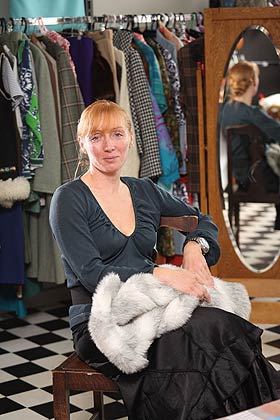

Dr Shelagh Ferguson
“We're finding all this rich, rich stuff about how people attach and emotionally interact with material.”
They may not be skeletons in the closet, but it seems that a good number of wardrobes are haunted by sartorial symbols of past triumphs and tragedies.
Department of Marketing consumer behaviourist Dr Shelagh Ferguson is exploring people's emotional attachments to clothes – how emotion drives, first, purchasing and, then, wearing decisions.
She has embarked on what is turning into an ambitious trans-Tasman project with former Otago colleague Dr Alistair Tombs, now based at the University of Queensland, filming people while they examine the contents of their wardrobes and explain their clothing successes – and disasters.
The researchers began by wanting to better understand why people become attached to one particular item of clothing and not another, but they soon found all sorts of fascinating insights.
“It seems people are not logical when it comes to buying or wearing clothes. Some have wardrobes for stuff they don't wear, but aren't prepared to throw out,” Ferguson explains. “When they talk about these clothes, it is this rich personal history that is about how they have used all this clothing to memorialise events.
“This is not clothing they like or necessarily something they think represents themselves, but they still keep it.”
Stories have ranged from green PVC trousers – kept for bad taste parties – to an expensive designer outfit a woman wore just once for what she described as the most awful date ever.
“So we're finding all this rich, rich stuff about how people attach and emotionally interact with material,” says Ferguson.
While the research project is still in its early stages, there are a number of willing interviewees, including a 95-year-old woman with a collection of fur coats.
Aside from learning more about the connection between emotion and purchasing decisions, Ferguson also hopes to make a documentary film using the recorded interviews.